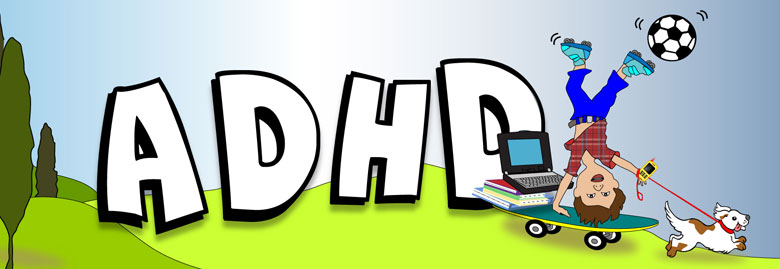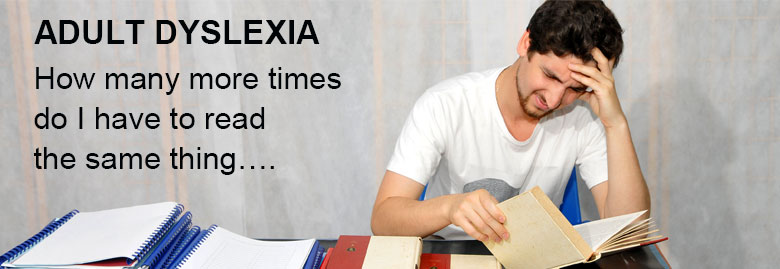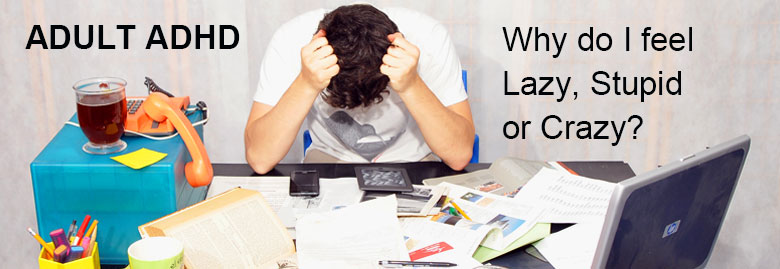Originally published in The Dyslexic Reader, Issue 11 Copyright (c) Fall 1997-year DDAI.
Disorientation, Confusion, and the Symptoms of A.D.D.
Adapted and Excerpted from the Advanced Davis Procedures Workshop Manual The same procedures used in Davis Dyslexia Correction can also help the A.D.D. child (or adult) achieve self-control and overcome problems with focusing attention and staying on task. To do this, Orientation Counseling is supplemented with a technique called Dial-Setting. Davis Symbol Mastery is then used not merely as an aid to reading comprehension, but as a means for students to master basic concepts needed to achieve self-awareness and self-control. Disorientation and distorted perceptions do much more than merely create symptoms of dyslexia. The dyslexic or A.D.D. child uses disorientation for entertainment; he may be disoriented for hours on end creating the imaginary world he plays in. What we accept as reality is what we experience. The way we realize an experience is that we perceive it. Reality, then, is what we perceive it to be. When disorientation occurs, perception becomes distorted. A person who is disoriented experiences a reality that is not being experienced by others – a false, or alternate, reality. The longer, in duration, disorientation, the more alternate reality that is experienced.
How Disorientation Undermines Conceptual Understanding
Because of their frequent disorientation, many A.D.D. individuals do not learn the basic lessons of life. Cause and effect do not exist in the disorienting child’ imaginary alternate reality world. Thus, the child never learns the concept of consequence. Additionally, the child is also experiencing a distorted sense of time. A minute can be a very long time or very short – but it is never the same. A person who experiences time uniformly can develop an inherent sense of how long it takes a minute to go by. Most children have an awareness of the passage of time by age five; by age seven, they can sense the passage of five minutes. But the disorienting child doesn’t experience the passage of time uniformly, and so does not develop an inherent sense of the passage of time at all, even as a teenager or adult. With an inherent sense of time, we also develop and inherent sense of sequence. That is, we understand the way things follow each other one after another. If we have time and sequence, we will also develop an inherent sense of order as opposed to disorder. But without the sense of time, we can never progress to understanding sequence or order.
Att design: insert photo with caption in above section of text: Time is the measurement of change
in relation to a standard.
Why Disorientation Leads to Socially Unacceptable Behavior
A child who is disoriented experiences the following problems: • distortions in visual and auditory perceptions, • a shift in time sense, and • a reversal of balance and movement senses. As we look at each experience in turn, we see how disorientation leads to behaviors associated with A.D.D., inattention, impulsivity and hyperactivity.
Distorted Perceptions of Sound and Vision
A child who is experiencing distortions in sound either does not hear what people say to him, or hears their words inaccurately. So, of course, he responds inappropriately. He thinks he is doing what was asked, but others see him as exhibiting opposition, or acting without thinking. Since his vision is also distorted, the child does not see the task at hand correctly or consistently, so he makes mistakes. Often, the child can stop the perceptual distortions and regain a sense of control by shifting his attention to something else. He got disoriented, could no longer see or hear the task, shifted his attention to something else in order to reorient, and never got back to finishing the task.
Time Sense Distortions
When a person’s perception of time shifts or changes, his physical strength and stamina change. The child whose internal clock chronically moves faster lives two or three minutes while others are living only one. Not only does he have more time; he has greater strength and stamina. The world goes too slow for him and he goes too fast for everyone else.
Impulsivity
Impulsivity is described as acting before thinking. A child who thinks, using nonverbal conceptualization skills – picture thinking – is thinking many times faster than the child using verbal conceptualization. When the child seems to act on impulse, it’s not that he didn’t think things through. Rather, his mind raced so fast that it looked like he didn’t have time to think. Unfortunately, because of the child’s habitually distorted perceptions, he does not grasp notions of consequence or orderliness. So his thoughts do not include awareness of socially acceptable constraints, such as waiting one’s turn in line.
Att design: insert photo with caption in above section of text: Through clay, the student models the concepts that are the key to regulating his actions.
Difficulty Taking Turns
Because their time sense is distorted and has been distorted over long periods, disorienting children have no concept of order as opposed to disorder, sequence, and time. Being in line to take a turn is being in a sequence, and there is an order of next in line goes next. Both of these concepts are alien to the disorienting child. He has no awareness that the others are waiting to go, because he has not awareness of time, sequence or order. He sees the slide and wants to go down, so he runs over to it and tries to go up the steps. Somebody tells him, “Go to the end of the line and wait your turn.” Perplexed and angry at being chastise, he just pushes his way to the top of the steps to reach is goal. His behavior is socially unacceptable because without the concepts of time, sequence, and order, he cannot even be aware that the other children are waiting to go. With no sense of time, there can be no such thing as waiting.
Balance and Motion
The disorienting child feels as if he is moving when he is not. If he just tries to sit still, he is likely to feel sick to her stomach. So he counters the false sensation by starting to move He becomes jittery, tapping his foot or bobbing his head – this actually makes him feel like he is sitting still. He does not feel his restless motions; he is unaware that this is occurring until somebody points it out to him.
What is the Solution?
Because a child cannot modify behavior he is unaware of, the child must be given the tools of orientation and then taught to be aware of their internal clock and energy level. After providing Orientation Counseling, a Davis Facilitator uses a techniques call Dial-Setting. This provides the child with an imagined regulator or thermostat, so that he gains personal control over the setting of his internal clock. By having the child observe and become aware of how other’s ‘dials’ are set, the Facilitator gives the child a tangible way to set his own ‘dial’ at the same level. The Facilitator then helps the child to master the concept of consequence. Through Symbol Master, the child learns that everything that happens is a result of something else. Because of the child’s past time sense distortions, he may have never before made the connection between his own actions, and the reactions of others. Once the child understands consequence, he needs to master the concepts of time, sequence, and order vs disorder. He does this through continued clay modeling, guided by the Davis Facilitator. It may take time for a child – or adult – to overcome ingrained habits. However, with orientation, the person no longer has distorted perception, and begins to experience the passage of time consistently. Soon he will be living in the same world as others around him, and will start to act accordingly. © DDAI, 1996, 1997 All Rights Reserved






